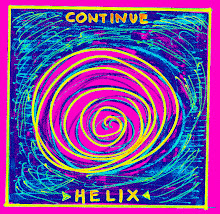The innovative Greek know-how has played an important role in the fine conservation and restoration of the Ancient Greek statues and artefacts in Acropolis before they were exposed at the New Acropolis Museum.

Specialized technicians cleaned the grand relieves at the restoration laboratory in the Acropolis with a new laser developed in Crete; what the hi tech Englishmen didn’t manage to do after so many years of storing the marbles of the Acropolis, was achieved due to the inspiration and love of the Greeks, within a small period of time.
The Institute of Technology and Research to preserve the Acropolis Statues
Since 1995, the Institute of Electronic Structure and Laser of the Foundation for Research and Technology - Hellas (ITE) has been cooperating with the Committee for the Conservation of the Acropolis Monuments in order to implement an innovative cleaning system for the Parthenon frieze.
This choice was made for the safe and controlled removal of incrustation from the surface of the monuments and marbles.
The director of the Department of Electronic Structure, Dr Fotakis revealed that scientists had discovered that during the conventional laser removal, selective vaporization of the dark encrustations on the marble surface was altering the absorption spectrum of the remaining encrustations.
This is what caused the yellow discoloring on the ancient Greek statues and marbles.
The new laser developed in Crete
The innovation refers to the use of two laser beams of infrared and ultraviolet rays simultaneously; the two wavelength method (one ultra red at 1,064nm and an ultraviolet at 355nm) is able to remove the yellow discoloring appearing on the frieze surface.
The scientists have been thoroughly researching and comparing the different cleaning methods used in several different monuments and marbles. The new method was used for the first time during 2002-2005 to clean some of the Acropolis Statues and parts of the temple of Athena – Nike and the Erechtheion.
The laser method developed in Crete allowed the scientists to remove unwanted layers from the surface, in a method that takes place in discrete steps; the four sculptures of the Parthenon frieze, the upper part of the Caryatid (F) and four parts of the Acropolis frieze.
The project will continue with the cleaning and restoration of the statues of all four Caryatids.
Mr Fotakis denoted that this technology was transferred to France, where it was used to restore a monastery.
All the tests were perfectly successful and the cooperation with the Committee for the Conservation of the Acropolis Monuments will continue. Among the plans is the creation of a lab for the conservation of paintings, in collaboration with the Greek National Gallery
From: creteGazette



Δεν υπάρχουν σχόλια:
Δημοσίευση σχολίου